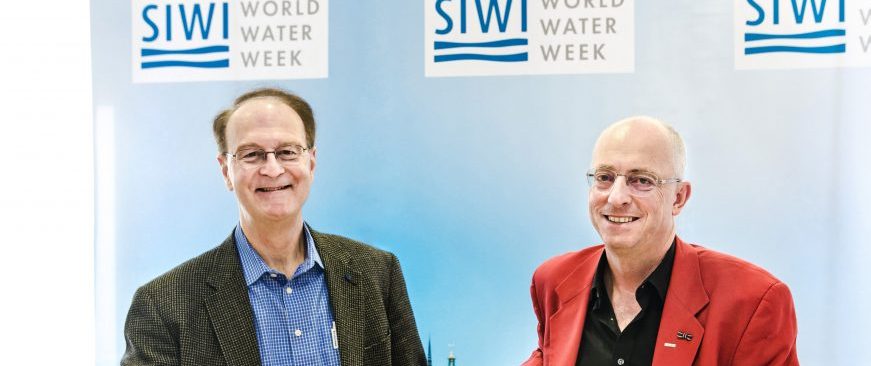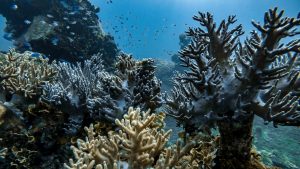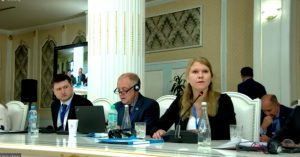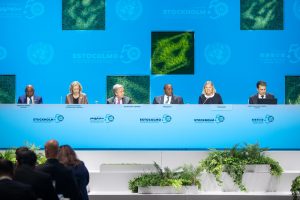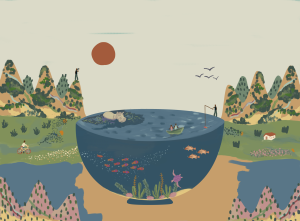Curiosity-charged laureates look ahead to new challenges
With their work on microorganisms transforming wastewater treatment worldwide, the curiosity of the 2018 Stockholm Water Prize winners remains undimmed as they eye future advances in the water sector and beyond.
This article is written by Nick Chipperfield and was originally published in WaterFront Daily #4 2018. Photo: Mikael Ullén/SIWI
Read the full issue here >>
It was perhaps inevitable that Mark van Loosdrecht [Delft University of Technology] and Bruce Rittmann [Biodesign Institute, Arizona State University] would work closely together on wastewater. “In environmental engineering, there aren’t many people looking inside the box. Our approach has been very different because we dissect what’s inside the box,” explains van Loosdrecht.
Although having worked at different universities, the pair are considered leaders in technologies that remove contaminants from water, reduce wastewater treatment costs and energy consumption, and enable the recovery of chemicals and nutrients for recycling. Their co-operation, which began in the early 90s, is based on obvious personal chemistry and mutual respect. “What’s remarkable about Mark is his incredible ability to translate his good ideas into real processes. I’m always learning from Mark about what it takes to move things to the next level … this is really spectacular,” says Rittmann.
“I’m often too nerdy”, Loosdrecht says, laughing.
“Bruce is way better at translating and communicating concepts, and he’s a better performer on stage!”
Loosdrecht and Rittmann are set on building understanding of water treatment. “If you make water treatment simpler, or better known, or cost less, more places can install it easily – and if you improve water you improve society,” says Loosdrecht. “Microorganisms are fascinating, and they’re getting more fascinating. As we learn more about them, and we’re confronted with more water quality challenges, we’re able to discover more and more organisms doing really important and interesting things,” Rittmann says, beaming.

The two expressed optimism for the future, with Loosdrecht citing urban planning as an area where different functionalities are merging more effectively. Other areas of interest include real-time monitoring of systems, slime layer biofilm. “Discovering new organisms, new functions, and finding out how to use them – I’m going to keep doing that. And I hope lots of people around the world continue doing it too,” says Rittmann, adding that he is currently working on combining his work on microorganisms with human physiology. “There are tremendous interactions between human hosts and microbial communities … we can make giant breakthroughs. I’m learning, I’m really learning a lot. And it’s really, really exciting,” Rittmann says, grinning.
